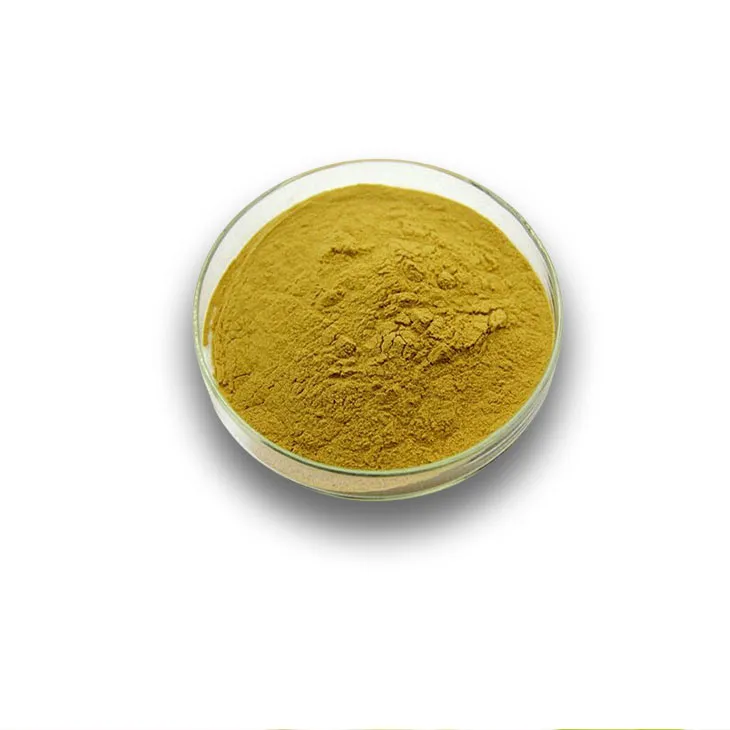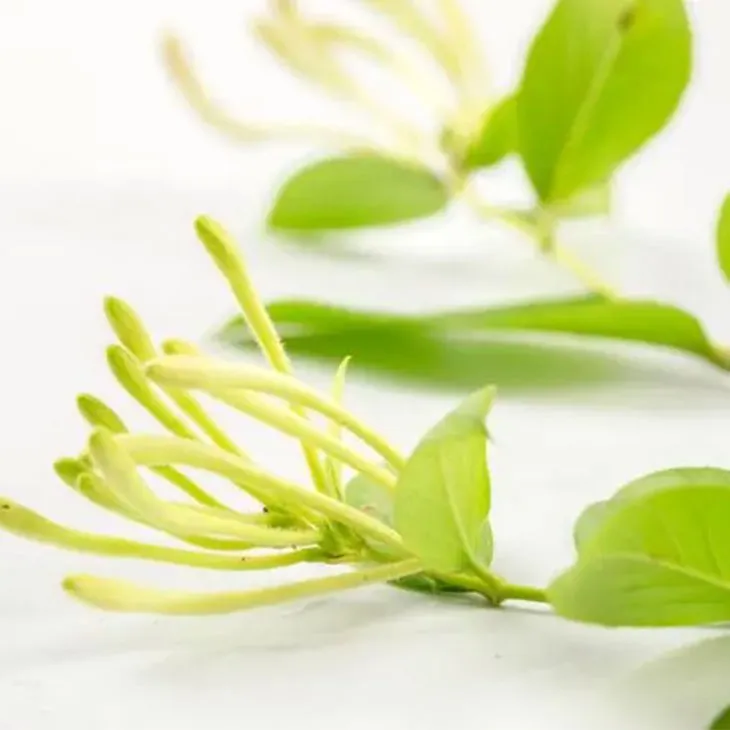- 0086-571-85302990
- sales@greenskybio.com
Honeysuckle pollen: China vs. the United States.
2024-11-30

1. Introduction
Honeysuckle Pollen, a microscopic yet significant component, holds different levels of importance in China and the United States. This article aims to comprehensively compare the understanding, research, and utilization of Honeysuckle Pollen in these two countries, each with its own unique characteristics and approaches.

2. Honeysuckle Pollen in China
2.1. Traditional Chinese Medicine Heritage
In China, honeysuckle has been an integral part of traditional Chinese medicine (TCM) for centuries. TCM views honeysuckle as a herb with cooling and detoxifying properties. The pollen of honeysuckle is also considered to possess certain medicinal values. It is often used in herbal formulas to treat various ailments, such as fever, sore throat, and skin infections.
2.2. Modern Research in China
- Chinese researchers have been conducting in - depth studies on honeysuckle pollen. Modern scientific methods have been employed to analyze its chemical composition. For example, it has been found to contain various bioactive compounds like flavonoids, which are known for their antioxidant properties.
- Research has also focused on its potential health - enhancing effects. Some studies suggest that honeysuckle pollen may have immunomodulatory functions, which could help boost the body's immune system.
- In addition, Chinese scientists are exploring ways to better preserve and process honeysuckle pollen to maximize its medicinal benefits. This includes research on extraction methods to obtain the active ingredients more efficiently.
2.3. Utilization in Chinese Health and Wellness
- Honeysuckle pollen is widely used in the production of traditional Chinese herbal products. It can be found in herbal teas, tinctures, and capsules, which are popular among consumers seeking natural remedies for minor health issues.
- In the field of cosmetics, honeysuckle pollen is also making its mark. Its antioxidant and anti - inflammatory properties make it a desirable ingredient in skin - care products. Some Chinese cosmetic brands are incorporating honeysuckle pollen extracts into their products to promote skin health and anti - aging effects.

3. Honeysuckle Pollen in the United States
3.1. Scientific Research Perspective
Unlike China, the United States does not have a traditional medical system similar to TCM. In the US, the study of honeysuckle pollen is mainly driven by scientific research interests. Scientists are interested in understanding its ecological role in the native flora.
3.2. Ecological Research
- Research on honeysuckle pollen in the US often focuses on its role in pollination. Honeysuckle plants are important for local ecosystems as they provide nectar and pollen for various pollinators, such as bees and butterflies. Understanding the quality and quantity of honeysuckle pollen is crucial for maintaining the health of these pollinator populations.
- Another aspect of ecological research is the study of how honeysuckle pollen disperses in the environment. This includes factors such as wind, water, and animal vectors that play a role in pollen movement and plant reproduction.
3.3. Applications in Modern Biotechnology
- In the field of modern biotechnology, US researchers are exploring the potential of honeysuckle pollen. For example, they are studying whether certain components of the pollen can be used in the development of new drugs or bio - based materials.
- Some research is also focused on genetic modification of honeysuckle plants to enhance their pollen production or improve its quality for specific applications in biotechnology.

4. Comparison between China and the United States
4.1. Understanding and Conceptual Differences
- In China, the understanding of honeysuckle pollen is deeply rooted in TCM concepts. It is seen as a natural remedy with a long - established history of use in treating diseases. In the United States, it is more of a subject of scientific research, and the focus is on its ecological and biotechnological aspects.
- China's view emphasizes the holistic approach of traditional medicine, where honeysuckle pollen is part of a complex system of herbal medicine. In the US, the approach is more reductionist, breaking down the pollen into its chemical and biological components for study.
4.2. Research Focus and Depth
- Chinese research on honeysuckle pollen has a wide - ranging focus, from traditional uses to modern scientific validation. It aims to bridge the gap between TCM and modern medicine. In contrast, US research is more concentrated on ecological and biotechnological aspects, with a greater emphasis on basic scientific research.
- The depth of research also varies. In China, there is a large body of research on the medicinal properties of honeysuckle pollen, including clinical trials in some cases. In the US, the research on ecological and biotechnological aspects may be more in - depth in terms of understanding the molecular and genetic levels.
4.3. Utilization Patterns
- China utilizes honeysuckle pollen mainly in the health and wellness industry, with a strong emphasis on traditional herbal products and cosmetics. In the United States, the utilization is more in the context of ecological conservation and the development of new biotechnological products.
- China's utilization is often based on traditional knowledge and experience, while the US utilization is more driven by scientific innovation and the search for new applications in emerging fields.

5. Conclusion
In conclusion, honeysuckle pollen in China and the United States represents two different paradigms of understanding, research, and utilization. China's approach, influenced by its rich TCM heritage, focuses on the medicinal and health - related aspects, while the US approach, driven by scientific research, emphasizes ecological and biotechnological applications. Both countries make unique contributions in their respective areas, and there may be potential for cross - fertilization of ideas in the future. For example, Chinese traditional knowledge about honeysuckle pollen could inspire US researchers in the search for new drugs, and US ecological research could provide new perspectives for China in the conservation of honeysuckle resources. This comparison not only highlights the differences but also the potential for collaboration and mutual learning in the study of honeysuckle pollen.
FAQ:
What are the main uses of honeysuckle pollen in China?
In China, honeysuckle has a long - standing presence in traditional Chinese medicine. Its pollen is often considered a valuable natural resource with potential health - enhancing properties. It may be used in traditional medicine - related applications for things like promoting health, potentially having effects on the immune system or other aspects related to well - being, based on traditional medical concepts and also modern scientific exploration.
How does the United States study honeysuckle pollen?
In the United States, without the same traditional medical background as China, the study of honeysuckle pollen focuses more on its ecological role and potential applications in modern biotechnology from a scientific research perspective. This could involve looking at how it interacts with the ecosystem, or how it can be used in areas such as genetic engineering or biopharmaceutical research.
What are the differences in the understanding of honeysuckle pollen between China and the United States?
In China, the understanding is deeply influenced by traditional Chinese medicine, seeing it as a natural resource with health - related properties. In the United States, the understanding is more based on scientific research in terms of its ecological and modern biotechnological potential. So, the difference lies in the origin of the perception, one from a traditional medical heritage and the other from a pure scientific research - based approach.
Are there any commercial applications of honeysuckle pollen in the United States?
While there may not be as many commercial applications directly related to the traditional medical use as in China, in the United States, there could be potential commercial applications in the field of modern biotechnology. For example, if it is found to have certain properties useful in biopharmaceutical production or in ecological restoration projects that can be commercialized, it may be used in those areas.
How does traditional Chinese medicine influence the research on honeysuckle pollen in China?
Traditional Chinese medicine has a significant influence on the research of honeysuckle pollen in China. It provides the initial concepts and hypotheses about its potential health benefits. Modern Chinese research often starts from these traditional ideas and then uses scientific methods to verify and further explore. For example, traditional beliefs about its effects on certain ailments may prompt scientific studies to investigate if there are actual pharmacological effects at work.
Related literature
- Honeysuckle Pollen: Traditional and Modern Perspectives in China"
- "The Ecological Significance of Honeysuckle Pollen in the United States"
- "Comparative Studies on Honeysuckle Pollen: China - US Research"
- ▶ Hesperidin
- ▶ citrus bioflavonoids
- ▶ plant extract
- ▶ lycopene
- ▶ Diosmin
- ▶ Grape seed extract
- ▶ Sea buckthorn Juice Powder
- ▶ Beetroot powder
- ▶ Hops Extract
- ▶ Artichoke Extract
- ▶ Reishi mushroom extract
- ▶ Astaxanthin
- ▶ Green Tea Extract
- ▶ Curcumin Extract
- ▶ Horse Chestnut Extract
- ▶ Other Problems
- ▶ Boswellia Serrata Extract
- ▶ Resveratrol Extract
- ▶ Marigold Extract
- ▶ Grape Leaf Extract
- ▶ blog3
- ▶ blog4
-
有机金银花花粉澳大利亚
2024-11-30
-
Chinese stevia extract powder manufacturers.
2024-11-30
-
Chinese Yohimbe Bark Extract Suppliers.
2024-11-30
-
Chinese Rutin Factories.
2024-11-30
-
The Pure Astaxanthin Most Worth Buying.
2024-11-30
-
Nature's Bounty Nettle Leaf Extract.
2024-11-30
-
Super Essence of Natural Lotus Leaf Extract.
2024-11-30
-
Chinese Sea - buckthorn Oil Manufacturers.
2024-11-30
-
Pomegranate Extract
2024-11-30
-
Maca Extract
2024-11-30
-
White Willow Bark Extract
2024-11-30
-
Carrageenan Extract Powder
2024-11-30
-
Bayberry Extract
2024-11-30
-
Chasteberry Extract
2024-11-30
-
Hops Extract
2024-11-30
-
Avocado Extract Powder
2024-11-30
-
Panax Ginseng Leaf Extract
2024-11-30
-
Maitake Mushroom Extract
2024-11-30





















